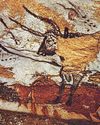
For much of Western history, we have been confident that human beings are persons but no other creatures have that status. These beliefs matter because personhood has often been deemed a necessary requirement for possessing moral value. Recently, an American legal activist group, the Nonhuman Rights Project, has challenged the assumption that only human beings are persons. Their approach is simple. They assume that humans possess particular features that make them persons, then ask whether there is evidence that any nonhuman animals display these same qualities. The group has offered testimony from an array of experts to support the claim that chimpanzees, elephants, and dolphins do indeed possess them. They conclude that these animals should legally be considered persons. Indeed, the Project has filed lawsuits in several state courts on behalf of individual chimpanzees, requesting that these nonhuman persons be granted legal recognition of their autonomy.
Although the Project makes claims about legal rights only, and their court suits have so far been unsuccessful, their arguments have implications for more general issues concerning the moral standing of nonhuman animals and their relations to humans. If some animals do have standing as persons even in the narrow sense required for legal recognition, then we may be morally obliged to treat those animals very differently, by, for example, not killing them for sport or food, or using them for medical experimentation.
Historic Animal Identity Issues
Bu hikaye Philosophy Now dergisinin June/July 2021 sayısından alınmıştır.
Start your 7-day Magzter GOLD free trial to access thousands of curated premium stories, and 9,000+ magazines and newspapers.
Already a subscriber ? Giriş Yap
Bu hikaye Philosophy Now dergisinin June/July 2021 sayısından alınmıştır.
Start your 7-day Magzter GOLD free trial to access thousands of curated premium stories, and 9,000+ magazines and newspapers.
Already a subscriber? Giriş Yap

Metaphors & Creativity
Ignacio Gonzalez-Martinez has a flash of inspiration about the role metaphors play in creative thought.

Medieval Islam & the Nature of God
Musa Mumtaz meditates on two maverick medieval Muslim metaphysicians.

Robert Stern
talks with AmirAli Maleki about philosophy in general, and Kant and Hegel in particular.

Volney (1757-1820)
John P. Irish travels the path of a revolutionary mind.

IT'S A WONDERFUL LIFE
Becky Lee Meadows considers questions of guilt, innocence, and despair in this classic Christmas movie.

"I refute it thus"
Raymond Tallis kicks immaterialism into touch.

Cave Girl Principles
Larry Chan takes us back to the dawn of thought.

A God of Limited Power
Philip Goff grasps hold of the problem of evil and comes up with a novel solution.

A Critique of Pure Atheism
Andrew Likoudis questions the basis of some popular atheist arguments.

Exploring Atheism
Amrit Pathak gives us a run-down of the foundations of modern atheism.